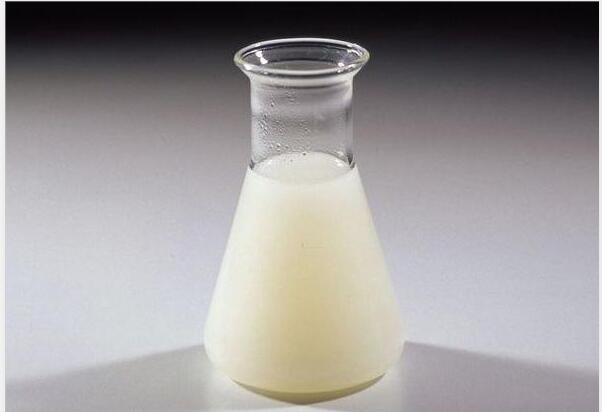The workability of fresh concrete has a great impact on the pumpability, construction performance, mechanical properties and durability of hardened concrete, and the workability of fresh concrete The workability of concrete depends largely on the air content of the concrete. In actual construction, the optimal air content range of concrete should be determined during the trial mixing process according to the location of the project and the functions of the concrete, and should be effectively controlled to help ensure the construction quality of concrete.
Types of bubbles in concrete
Before concrete is vibrated, there are a large number of bubbles inside it, mainly including air bubbles introduced during concrete mixing, transportation and blanking, bubbles introduced by water-reducing agents, and Tiny bubbles introduced by air-entraining agents.
(1) Air bubbles introduced during concrete mixing, transportation and blanking. This type of bubble has a large diameter, uneven distribution and is extremely unstable. It is easy to aggregate into bubbles with a larger diameter and burst easily, so it is called unstable bubble. This kind of unstable bubbles introduced by mechanical mixing will have a negative impact on the fluidity of concrete, as well as on the mechanical properties and durability of concrete after hardening.

(2) Bubbles introduced by superplasticizer. The water-reducing agent can introduce a certain amount of bubbles. Due to the same electrical repulsion, these bubbles are between the cement particles like ball bearings to disperse the cement particles, thereby increasing the sliding effect between the cement particles. However, these bubbles are uneven in size, irregular in shape, and unstable. As transportation and vibration proceed, they tend to aggregate with each other to form large bubbles, and eventually overflow outwards and reach the surface of the concrete to form apparent bubbles, resulting in honeycomb pitted surface defects. .
(3) Bubbles introduced by air-entraining agents. The air-entraining agent can form many fine bubbles with a size between (20-200)um and evenly distributed inside the concrete. The liquid film on the surface of this type of bubble is relatively strong. From a thermodynamic point of view, that is, the electrokinetic potential of the liquid film is high, which can prevent the bubbles from coalescing. The bubbles are relatively stable and difficult to burst. It is essentially different from the bubbles introduced by water-reducing agents, and is beneficial to the impermeability and other durability of concrete.
Defoaming agents help eliminate large bubbles in concrete. On the one hand, adding defoaming agent can eliminate the bubbles between the concrete and the formwork to a certain extent, effectively prevent or eliminate the generation of honeycombs and pitted surfaces on the concrete surface, and make the surface of the concrete have higher smoothness and gloss. On the other hand, defoaming agents can eliminate a large number of bubbles inside concrete, reduce the air content and internal porosity of concrete, and improve the mechanical properties and durability of concrete. Defoaming agents in concrete mainly eliminate bubbles introduced by water-reducing agents. Therefore, defoaming agents are often compounded with polycarboxylic acid-based water-reducing agents in projects to solve the problem of large air entrainment of polycarboxylic acid-based water-reducing agents. .
Compounding of defoaming agent and polycarboxylic acid water-reducing agent
Because the polycarboxylic acid superplasticizer mother liquor itself has a large air content, high surface activity, and good foam retention, when used directly in concrete, the air content of the concrete will increase. It has adverse effects such as high density, many apparent bubbles and low strength. Therefore, an appropriate amount of defoaming agent needs to be added to eliminate large bubbles in the concrete. The basic performance testing of the combination of defoaming agent and polycarboxylic acid water-reducing agent generally includes the compatibility of defoaming agent and water-reducing agent and the impact of defoaming agent on concrete properties.
(1) Compatibility of defoaming agent and water reducing agent
The difficulty in the combined use of defoaming agents and polycarboxylic acid-based water-reducing agents is the compatibility issue with the water-reducing agents. The compatibility of the defoamer and the water-reducing agent can be evaluated by testing the dissolution state of the defoaming agent in the polycarboxylic acid-based water-reducing agent. The defoaming agent has good solubility in the polycarboxylic acid-based water-reducing agent and is long-lasting. If there is no stratification over time, the compatibility is good and can be compounded with the water-reducing agent; while the defoaming agent with poor compatibility cannot be compounded with the water-reducing agent and can only be added to the concrete alone. Add defoaming agent and polycarboxylic acid water-reducing agent to the cement slurry. Testing the initial fluidity and fluidity loss over time of the cement slurry can also be used to evaluate the performance of the defoaming agent and polycarboxylic acid-based water-reducing agent. compatibility. The defoaming agent with good compatibility with the polycarboxylic acid-based water reducing agent should be one that has no obvious adverse effects on the initial fluidity and fluidity loss over time of the cement slurry.
(2) The impact of defoaming agents on the performance of concrete The impact of defoaming agents on the performance of concrete is reflected in two aspects: the working performance of concrete and the mechanics after hardening performance. Generally, the impact of defoaming agents on the performance of concrete is evaluated by testing the slump and slump loss, air content and strength of concrete. It can significantly reduce the air content of concrete, have little impact on concrete slump and slump loss, and have a significant impact on the strength of concrete.High-efficiency defoaming agents are effective.

 微信扫一扫打赏
微信扫一扫打赏

